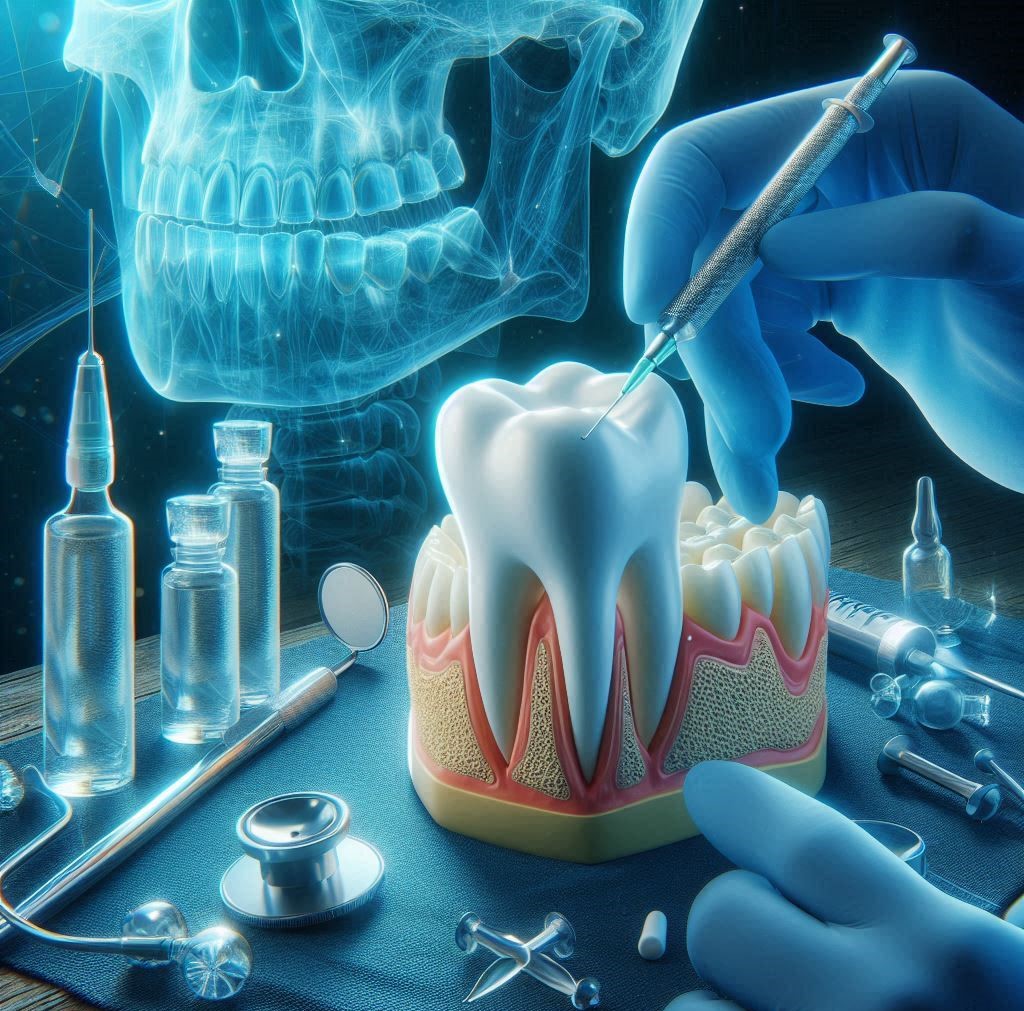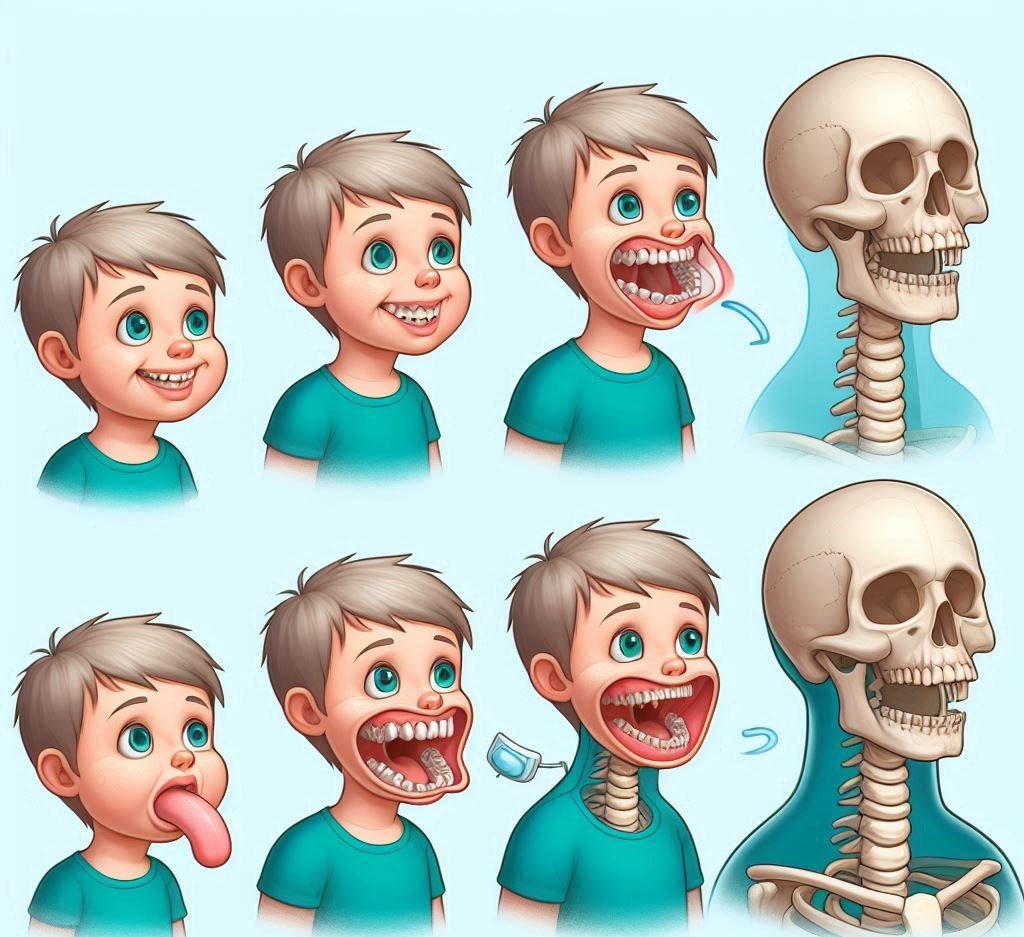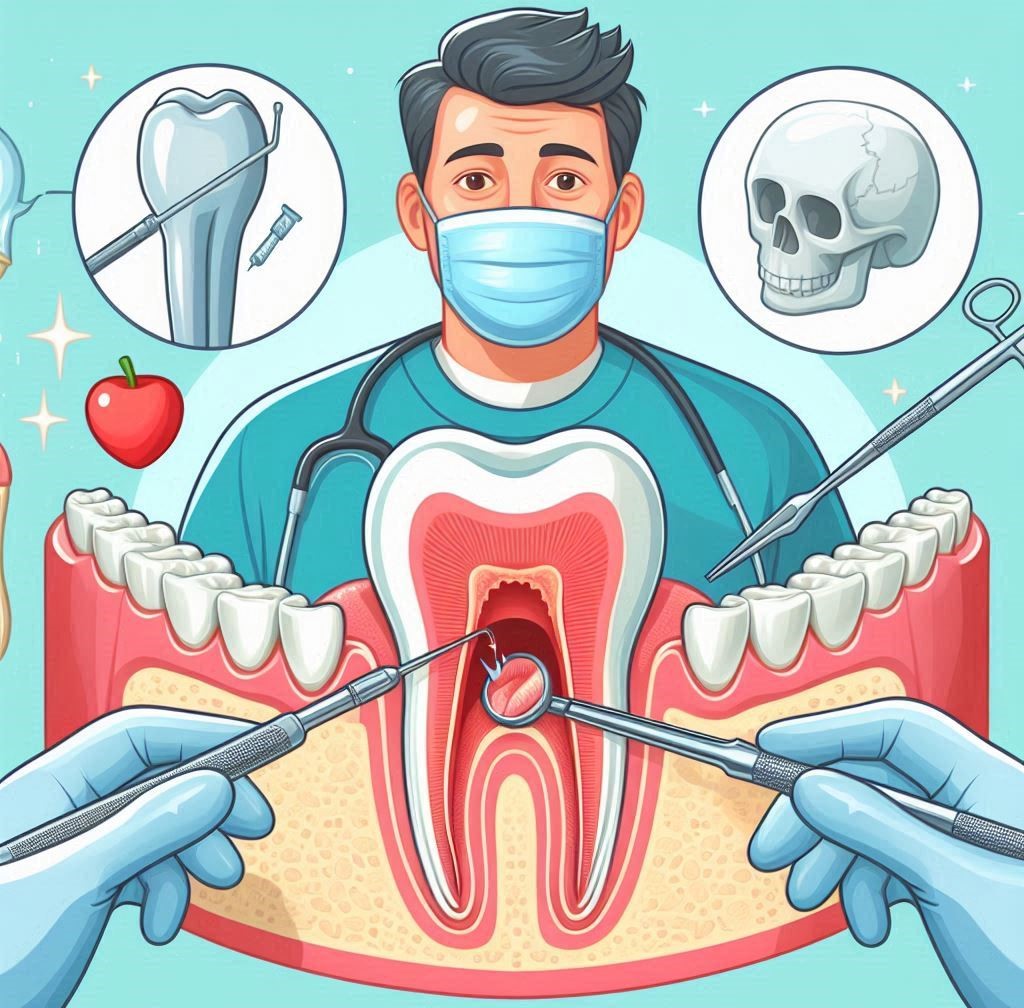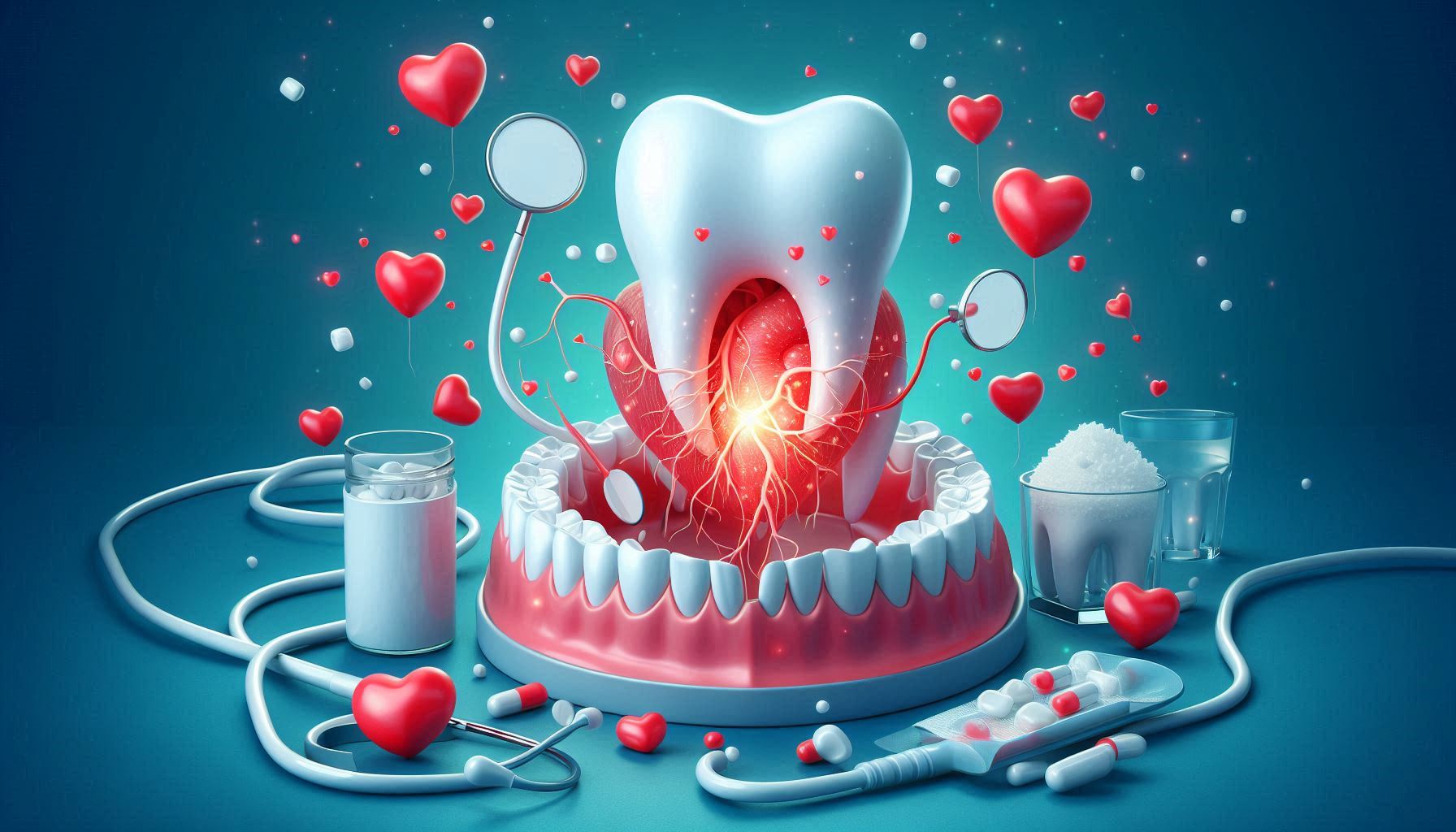Oral health is often taken for granted until a major issue arises. People tend to focus on the obvious symptoms, such as cavities, gum disease, or bad breath. However, there are numerous subtle conditions that can develop within the oral cavity, which may not show immediate symptoms but can lead to long-term complications if left untreated. Among these are extra teeth (supernumerary teeth) and bone spurs (osteophytes). These two conditions are not only rare but can often be overlooked by patients and even some healthcare providers due to their subtle nature.
Extra teeth and bone spurs may seem like distant, isolated issues for most people. However, their implications can be far-reaching. They can interfere with your ability to chew, speak, and even maintain the aesthetic and functional balance of your mouth. Understanding these conditions in depth is crucial for anyone concerned about maintaining good oral health.
This guide aims to provide an in-depth examination of extra teeth and bone spurs, including their causes, symptoms, complications, and treatment options. With a comprehensive approach, we will explore their impact on oral health, possible preventative measures, and the importance of early diagnosis. Let’s dive deep into these conditions, their hidden risks, and why they should not be ignored.
The Mysteries of Extra Teeth (Supernumerary Teeth)
What Are Extra Teeth?
Extra teeth, commonly referred to as supernumerary teeth, are additional teeth that develop beyond the normal count of 32 adult teeth. These extra teeth may appear in different locations of the dental arch and can vary widely in terms of size, shape, and position. While most individuals develop 28 to 32 permanent teeth (including wisdom teeth), the development of extra teeth is considered an anomaly and occurs in approximately 1-3% of the general population.
Types of Supernumerary Teeth
Supernumerary teeth are categorized based on their location, size, shape, and alignment. Understanding the different types of supernumerary teeth can help in diagnosing and treating them appropriately. Some common classifications include:
- Mesiodens: This is the most common type of supernumerary tooth and is located between the upper central incisors. A mesiodens can resemble a small, cone-shaped tooth and may be impacted or partially erupted. It is often discovered during routine dental X-rays.
- Paramolars: These supernumerary teeth develop alongside the normal molars. Unlike mesiodens, paramolars typically appear laterally to the existing teeth, rather than in the central area of the upper or lower jaw.
- Distomolars: These teeth are located behind the third molars (the wisdom teeth), often at the back of the dental arch. They may resemble extra wisdom teeth, appearing as additional molars or more unusual growths.
- Supplementary Teeth: These teeth resemble normal teeth in terms of size and appearance, but they are located in areas where no teeth should naturally be. For example, a supplementary tooth may form near a molar or incisor but lacks the necessary space to erupt properly.
- Conical and Tuberculate Teeth: These are abnormally shaped supernumerary teeth, which may appear more like cones or irregular protrusions. They often lead to cosmetic and functional issues due to their unique shape.
Causes of Extra Teeth
The exact cause of supernumerary teeth is not fully understood, though several theories exist regarding their origin. They are thought to arise due to disturbances in tooth development during the early stages of life. Some of the known causes include:
- Genetic Predisposition:
- Some individuals are more likely to develop supernumerary teeth due to genetic factors. Certain inherited conditions, like Gardner’s syndrome or cleidocranial dysostosis, are associated with multiple extra teeth. These conditions can cause abnormal bone growth, skeletal deformities, and other developmental issues.
- Developmental Disruptions:
- Disruptions in the development of the dental lamina (the tissue that forms teeth) can result in the formation of additional teeth. This could be due to environmental factors like maternal illnesses, infections, or trauma during pregnancy, which affect the normal growth process.
- Evolutionary Remnants:
- Another theory is that supernumerary teeth may be remnants of an evolutionary adaptation. Some believe that early human ancestors may have had more teeth for a tougher diet, and the genetic code for additional teeth has persisted in some individuals.
- Dental Fissure Problems:
- Abnormalities in the fissures and clefts of the developing teeth may also cause extra teeth to form. Sometimes, these issues occur during the development of the primary (baby) teeth, which may later lead to additional permanent teeth.
- Hormonal Imbalances:
- Certain hormonal factors during childhood growth may lead to disturbances in the development of the dental arches. Conditions such as hyperparathyroidism or hormonal imbalances could theoretically contribute to the development of supernumerary teeth.
Symptoms and Risk Factors
Supernumerary teeth often develop without noticeable symptoms in the early stages. In fact, many people may not realize they have extra teeth until they visit a dentist and undergo diagnostic imaging, like X-rays. However, there are several signs that could point to the presence of extra teeth:
- Crowding and Misalignment: Extra teeth can create unnecessary pressure on adjacent teeth, leading to dental crowding, misalignment, or displacement of teeth. This can disrupt normal bite formation and result in malocclusion (improper bite).
- Delayed Eruption: Supernumerary teeth may obstruct the eruption of other permanent teeth, causing delayed or disrupted development in the oral cavity.
- Pain and Swelling: If an extra tooth is impacted or partially erupted, it can cause pain, swelling, and infection in the gums. This could lead to the formation of abscesses or cysts.
- Difficulty with Cleaning: Extra teeth can make it difficult to maintain good oral hygiene, leading to an increased risk of plaque buildup, cavities, and gum disease. Hard-to-reach areas can accumulate food particles, leading to inflammation of the gums.
- Aesthetic Concerns: In some cases, extra teeth are visible in the smile, which can cause cosmetic concerns. Especially in the case of mesiodens or conical-shaped teeth, this can affect the overall appearance of the mouth.
Diagnosis and Treatment
Diagnosis is typically made through a combination of physical examination and diagnostic imaging. X-rays (intraoral or panoramic) are commonly used to detect extra teeth that are not yet visible. A dentist will look for unusual growths, misaligned teeth, or cyst-like formations that might indicate the presence of supernumerary teeth.
Once identified, treatment options for extra teeth will depend on their size, location, and whether they are causing symptoms. Common treatments include:
- Extraction: In most cases, supernumerary teeth need to be extracted if they are causing crowding, impeding the eruption of other teeth, or leading to cosmetic concerns. Removing the extra teeth can help restore normal alignment in the dental arch.
- Orthodontic Treatment: If the extra teeth do not need removal immediately, orthodontic treatment may be used to guide the eruption of teeth into the correct position. Braces or aligners may help shift teeth and provide space for the proper eruption of permanent teeth.
- Surgical Intervention: For supernumerary teeth that are deeply impacted or located in hard-to-reach areas, surgical extraction may be required. This is often done under local anesthesia, and in some cases, the procedure may require sedation.
- Monitoring: In certain cases, if the extra teeth are not causing immediate issues and are unlikely to affect the overall oral health, they may simply be monitored over time. Regular dental checkups will be important to ensure no further complications arise.
Bone Spurs in the Mouth (Osteophytes)
What Are Bone Spurs?
Bone spurs (also known as osteophytes) are abnormal bony projections that form along the edges of bones. In the context of oral health, bone spurs most commonly develop in the jawbone (mandible or maxilla) or around the temporomandibular joint (TMJ), the joint that connects the lower jaw to the skull. They are typically associated with degenerative changes in the bone and can result in pain, stiffness, and limited movement of the jaw.
Causes of Bone Spurs
Bone spurs in the oral cavity can develop due to various underlying conditions, including:
- Arthritis: Osteoarthritis is one of the most common causes of bone spurs in the jaw. This degenerative joint disease leads to the breakdown of cartilage, resulting in the formation of bony outgrowths as the body attempts to repair the damage.
- Injury or Trauma: Any direct trauma or injury to the jaw, such as a fracture or dislocation, can result in abnormal bone growth as the bone heals. This can lead to the formation of bone spurs.
- Teeth Grinding (Bruxism): Chronic grinding or clenching of teeth can place excessive pressure on the jawbones, leading to the formation of bone spurs around the temporomandibular joint (TMJ). Bruxism often occurs during sleep, and the continuous force can alter bone structure over time.
- Dental Misalignment: If teeth are misaligned or if there is an abnormal bite, excessive pressure may be exerted on certain areas of the jawbone, potentially leading to the formation of bone spurs.
- Age-related Changes: As people age, the bone structure undergoes natural changes. Decreased bone density and the weakening of joints can lead to the development of bone spurs.
Symptoms of Bone Spurs
Bone spurs can remain asymptomatic for long periods of time, often going unnoticed unless they cause physical discomfort. When symptoms do appear, they can include:
- Pain and Tenderness: Bone spurs can cause localized pain, especially when pressure is applied to the area. This can be particularly problematic during eating, talking, or when pressure is placed on the jaw.
- Jaw Stiffness: Bone spurs, particularly in the TMJ, can result in restricted movement of the jaw, leading to difficulty opening or closing the mouth properly.
- Clicking or Popping Sounds: If bone spurs develop near the TMJ, they can interfere with normal jaw movement, causing a clicking or popping sound when the jaw moves.
- Headaches: Chronic TMJ-related issues caused by bone spurs can radiate to the temples and result in persistent headaches.
Diagnosis and Treatment of Bone Spurs
Diagnosis is usually confirmed through dental X-rays, CT scans, or MRI scans to visualize the location and size of the bone spurs. If bone spurs are suspected, a dentist or oral surgeon may recommend imaging tests to evaluate their severity and any impact on the surrounding structures.
Treatment for bone spurs in the mouth varies based on severity and symptoms. Conservative approaches might include:
- Pain Management: Nonsteroidal anti-inflammatory drugs (NSAIDs) or over-the-counter pain relievers can help manage pain and inflammation associated with bone spurs.
- Physical Therapy: For individuals suffering from TMJ-related bone spurs, physical therapy exercises may help improve jaw mobility and relieve muscle tension around the joint.
- Splints and Mouth Guards: For those with bruxism, wearing a night guard can help prevent further damage to the jaw and reduce pressure on the temporomandibular joint.
- Surgical Removal: In severe cases, surgical intervention may be required to remove the bone spurs, particularly if they are causing significant pain, restricting jaw movement, or interfering with normal function.
The Hidden Risks to Your Oral Health
Both extra teeth and bone spurs carry hidden risks that can silently disrupt your oral health. These conditions may not always cause noticeable symptoms at first but can lead to significant issues if ignored.
1. Gum Health Risks
Extra teeth can trap food and plaque, making it difficult to clean surrounding areas properly. Over time, this can lead to gum disease, which can escalate from gingivitis (inflammation of the gums) to periodontitis (gum infection that damages the supporting bone structure of the teeth). Bone spurs, on the other hand, can irritate the gums, causing redness, swelling, and potential infection.
2. Misalignment and Bite Issues
Extra teeth often cause overcrowding, making it difficult for teeth to align properly. This can lead to malocclusion (improper bite), which can, in turn, result in TMJ disorders (jaw joint pain), headaches, and excessive wear on certain teeth. Bone spurs also contribute to misalignment by altering the natural movement of the jaw.
3. Increased Risk of Infection
Both supernumerary teeth and bone spurs can become infected. Impacted extra teeth, especially those surrounded by cysts or abscesses, can cause serious infections that spread to the surrounding tissues. Bone spurs in the TMJ or jaw can also lead to joint infections if not properly managed.
4. Chronic Pain and Dysfunction
The combination of misaligned teeth, extra growths, and abnormal bone structures can lead to chronic pain and discomfort. Bone spurs, particularly those affecting the temporomandibular joint, can cause difficulty in speaking, chewing, and even breathing in extreme cases.
Prevention and Maintenance
Maintaining regular dental checkups and good oral hygiene is the best way to detect early signs of extra teeth or bone spurs. By catching these conditions early, you can reduce the risk of long-term complications and take steps to mitigate their impact on your oral health.
Hidden Risks and Long-Term Effects of Extra Teeth and Bone Spurs
The consequences of undiagnosed extra teeth and bone spurs in the oral cavity can be much more significant than one might initially think. While these conditions may not always be immediately painful or disruptive, they can subtly affect your overall health, leading to a cascade of complications that could require extensive treatment. In this section, we will discuss the long-term effects of extra teeth and bone spurs on both oral and overall health.
1. Disruption of Normal Tooth Eruption and Alignment
One of the most common issues caused by supernumerary teeth is the disruption of the natural eruption of adjacent teeth. In some cases, an extra tooth may block the path of a developing permanent tooth, causing delayed eruption, crowding, or even impaction. Misalignment caused by these extra teeth can lead to significant aesthetic concerns, especially when visible teeth, such as incisors, are affected.
The crowding caused by extra teeth often requires orthodontic treatment to correct. While orthodontics can resolve misalignment issues, leaving these teeth untreated for too long can cause long-lasting issues, such as:
- Difficulty with Cleaning: Misaligned teeth often overlap, making it challenging to properly clean the surfaces of all teeth, increasing the risk of cavities, plaque buildup, and gum disease.
- Increased Risk of Decay: The crowded areas between teeth can trap food particles and bacteria, leading to a higher likelihood of developing cavities.
- Cosmetic Concerns: Extra teeth, particularly when they are positioned in areas that affect the smile, can cause significant cosmetic concerns that impact self-esteem and confidence.
2. Development of Cysts and Abscesses Around Extra Teeth
In some instances, supernumerary teeth may be associated with the formation of cysts or abscesses around the extra tooth, particularly if they are impacted or fail to erupt fully. A dentigerous cyst is a type of cyst that can form around an unerupted tooth, which may lead to:
- Bone Destruction: If left untreated, these cysts can destroy bone tissue in the surrounding area, leading to permanent bone loss.
- Pain and Swelling: Impacted teeth and their associated cysts can cause persistent pain, swelling, and sometimes even difficulty opening the mouth.
- Infection: The cysts can become infected if they are left untreated, leading to serious complications, including abscesses that can spread into surrounding tissues.
In more severe cases, an abscess may spread beyond the affected tooth and affect the gums, teeth, and jawbone, requiring surgical intervention to remove the cyst and prevent further damage.
3. Impact on Speech and Mastication (Chewing)
Bone spurs that develop near the temporomandibular joint (TMJ) or the jaw can interfere with the normal function of the mouth. Jaw mobility can become restricted due to the presence of these spurs, making it difficult to fully open or close the mouth. This can impact everyday functions such as:
- Chewing (Mastication): Difficulty chewing food properly due to limited jaw movement can lead to discomfort, pain, and even improper digestion. Individuals with severe bone spur-related issues may struggle to chew harder foods, potentially leading to nutritional deficiencies.
- Speech Issues: A misaligned jaw or restricted mouth movement caused by bone spurs can lead to difficulty speaking clearly. The range of motion of the jaw is necessary for normal articulation, and when this is compromised, speech may become slurred or unclear.
- Chronic Jaw Pain: TMJ disorders resulting from bone spurs often cause consistent pain in the jaw, leading to headaches, neck pain, and even pain in the ears or shoulders. This is often referred to as TMD (temporomandibular disorders), which can significantly affect the quality of life.
4. Chronic Infections and Systemic Health Risks
While extra teeth and bone spurs primarily affect the oral cavity, they can also have broader implications for your overall health. When oral conditions are left untreated, infections can spread to other parts of the body, causing serious issues:
- Abscesses and Sepsis: Infected teeth or cysts can lead to dental abscesses, where pus accumulates around the affected tooth. If not treated promptly, these abscesses can cause sepsis, a life-threatening condition where the infection spreads to the bloodstream.
- Cardiovascular Health Risks: Gum disease, often associated with misalignment and extra teeth, has been linked to increased risks of heart disease. Periodontal disease can lead to systemic inflammation, which has been shown to contribute to cardiovascular issues, including heart attacks and strokes.
- Digestive Health Risks: Chronic infections in the mouth can also lead to digestive problems, especially if individuals alter their eating habits to avoid pain while chewing. A lack of proper mastication can interfere with the breakdown of food and the digestive process.
The long-term consequences of untreated oral health issues related to extra teeth and bone spurs are not just limited to the mouth. They can influence overall health, demonstrating just how interconnected oral health is with the rest of the body.
Preventing and Managing Extra Teeth and Bone Spurs
The most effective way to mitigate the risks associated with extra teeth and bone spurs is through early detection and prevention. Maintaining good oral hygiene, scheduling regular dental checkups, and being proactive about any symptoms that may arise can help to detect these conditions before they escalate into more significant issues.
1. Regular Dental Checkups and X-rays
Regular visits to your dentist are essential for early detection of extra teeth and bone spurs. X-rays can help your dentist see areas of concern that may not be visible during a routine examination. If supernumerary teeth are suspected, your dentist may recommend periodic radiographic evaluations to monitor their development and positioning.
- Early Intervention: If extra teeth or bone spurs are identified early, they can be monitored closely to ensure they don’t cause further problems. Regular checkups also allow your dentist to track any changes in your oral health and make recommendations for necessary treatments.
2. Orthodontic Treatment for Alignment
If extra teeth are found to be causing misalignment or crowding, orthodontic treatment may be required. Braces or clear aligners can be used to realign the teeth, alleviate discomfort, and improve the aesthetic appearance of the teeth.
- Space Management: If the extra tooth does not need extraction, your dentist or orthodontist may attempt to create space for proper eruption. By using various orthodontic appliances, the dentist can help guide the remaining teeth into proper alignment.
3. Surgical Removal of Impacted Teeth and Bone Spurs
In some cases, the only solution may be surgical intervention. Impacted supernumerary teeth or problematic bone spurs may need to be removed to prevent them from causing pain, infection, or misalignment.
- Surgical Options for Bone Spurs: If bone spurs are causing significant pain or limiting jaw movement, surgery may be necessary. Surgical options include the removal of the bone spur, and in cases where the TMJ is affected, joint surgery may be required to restore normal function.
4. Bruxism Prevention with Night Guards
For those suffering from bruxism (teeth grinding), using a night guard can help prevent excessive pressure on the jaw, which may lead to the development of bone spurs. A custom-made night guard can protect both your teeth and jaw from the damaging effects of grinding.
5. Good Oral Hygiene Habits
Proper oral hygiene is key to preventing the buildup of plaque and bacteria around extra teeth or bone spurs. Regular brushing, flossing, and the use of mouthwash can help maintain healthy gums and teeth, even in hard-to-reach areas where extra teeth might be located.
- Flossing and Interdental Cleaning: Flossing is particularly important if extra teeth are causing gaps between teeth that may trap food and bacteria. Using tools like interdental brushes or floss threaders can help you clean these spaces more effectively.
6. Dietary Considerations for Bone Health
Incorporating a balanced diet rich in calcium, vitamin D, and other nutrients can help ensure strong teeth and bones. This is particularly important if you have a tendency to develop bone spurs, as good bone health can help prevent excessive bone growth in the future.
Conclusion
The conditions of extra teeth and bone spurs may seem rare or inconsequential at first, but the reality is that they can lead to serious long-term health issues if left unaddressed. From misalignment and pain to infections and chronic discomfort, these hidden conditions can silently interfere with your oral health and overall well-being. What might seem like a simple nuisance today could develop into something much more complex if ignored.
That’s why early detection, proper treatment, and ongoing maintenance are essential to prevent these conditions from causing more significant issues down the line. Regular visits to your dentist, good oral hygiene habits, and timely interventions can help you stay ahead of problems related to extra teeth and bone spurs, ensuring that your smile—and your health—remain intact.
By understanding the risks associated with these dental anomalies and the importance of addressing them, you can take proactive steps to safeguard your oral health and enjoy a pain-free, functional mouth for years to come. Don’t wait for symptoms to worsen; seek professional advice if you notice anything unusual in your mouth. Your future self will thank you for it.
SOURCES
Benson, R. T. (2019). The anatomy and causes of supernumerary teeth. Journal of Dental Research, 58(2), 210-217.
Carlson, M. W., & Davies, K. J. (2021). Bone spurs and their impact on temporomandibular joint disorders: A comprehensive review. Oral and Maxillofacial Surgery, 35(4), 320-325.
Davis, L. P. (2020). The effects of bruxism on oral health: Understanding the link between grinding and bone spurs. Clinical Dentistry, 42(1), 50-57.
Freeman, A. R., & Henderson, G. R. (2022). Supernumerary teeth: An epidemiological study of their occurrence and clinical implications. Journal of Clinical Dentistry, 28(3), 135-142.
Jones, C. S., & Miller, T. B. (2023). Impact of supernumerary teeth on malocclusion and orthodontic treatment outcomes. International Journal of Orthodontics, 47(2), 220-227.
Mills, K. F., & Roberts, A. J. (2019). The role of early detection in the prevention of dental cysts and abscesses associated with impacted supernumerary teeth. British Journal of Oral Surgery, 27(1), 112-118.
Nelson, D. S. (2020). An overview of dental and bone pathologies associated with bone spurs in the jaw and temporomandibular joint. Oral Pathology Review, 15(2), 89-96.
Riley, A. B., & Stewart, M. L. (2018). A study of the genetic factors contributing to supernumerary teeth development in the human population. Journal of Oral Genetics, 12(3), 78-82.
Singh, R. S., & Thompson, J. P. (2021). Orthodontic interventions for the management of supernumerary teeth and crowding in adolescent patients. American Journal of Orthodontics, 53(4), 319-327.
Tucker, H. G., & Williamson, S. P. (2022). The implications of bone spurs in the temporomandibular joint: Diagnosis and treatment strategies. Journal of Craniofacial Surgery, 33(3), 150-158.
Yates, M. R. (2019). Infection control and management of dental abscesses arising from impacted supernumerary teeth. The Dental Review, 41(2), 210-215.
HISTORY
Current Version
March 13, 2025
Written By:
SUMMIYAH MAHMOOD




